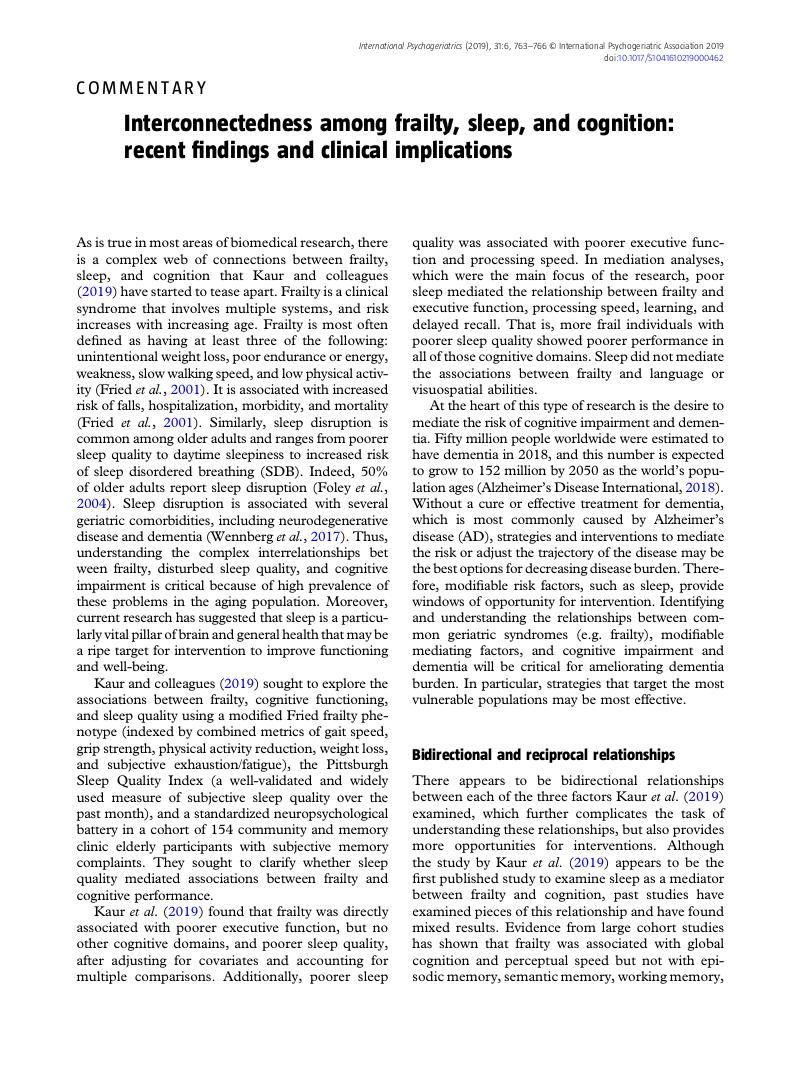Crossref Citations
This article has been cited by the following publications. This list is generated based on data provided by Crossref.
Jeste, Dilip V.
2019.
Frailty and mental health: association with cognition, sleep, and well-being in older adults.
International Psychogeriatrics,
Vol. 31,
Issue. 06,
p.
755.
Griffiths, Jiranan
Seesen, Mathuramat
Sirikul, Wachiranun
and
Siviroj, Penprapa
2023.
Malnutrition, Depression, Poor Sleep Quality, and Difficulty Falling Asleep at Night Are Associated with a Higher Risk of Cognitive Frailty in Older Adults during the COVID-19 Restrictions.
Nutrients,
Vol. 15,
Issue. 13,
p.
2849.
Ciolek, Cathy H.
and
Ross, Christine M.
2023.
Motoric Cognitive Risk Syndrome and Cognitive Frailty.
Topics in Geriatric Rehabilitation,
Vol. 39,
Issue. 2,
p.
109.
Li, Jinping
Wang, Yan
Zhai, Minfeng
Qin, Mengyuan
Zhao, Dandi
Xiang, Qian
Shao, Zaoyuan
Wang, Panrong
Lin, Yan
Dong, Yiting
and
Liu, Yan
2024.
Risk factors and a nomogram for predicting cognitive frailty in Chinese patients with lung cancer receiving drug therapy: A single‐center cross‐sectional study.
Thoracic Cancer,
Vol. 15,
Issue. 11,
p.
884.





